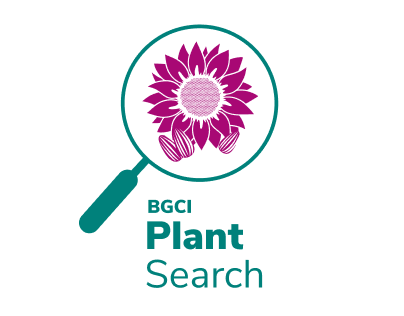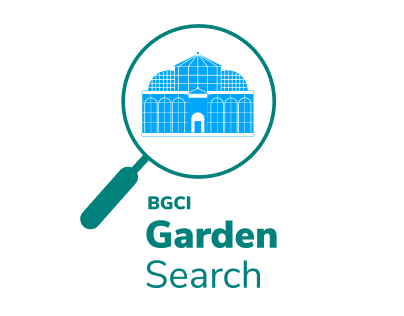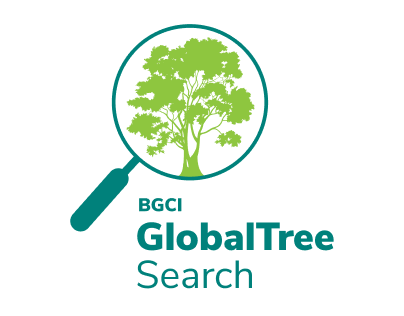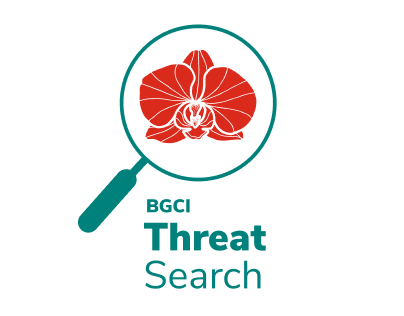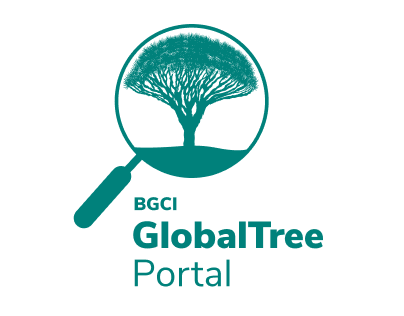The International Plant Exchange Network
- Implementing Access and Benefit Sharing
- The International Plant Exchange Network
- The Principles on Access to Genetic Resources and Benefit Sharing
Botanic Gardens maintain ex situ plant collections for research, conservation, education and to raise public awareness on biodiversity. They contribute to the implementation of the three objectives of the CBD, i.e., conservation of biodiversity, sustainable use of its elements and fair and equitable sharing of benefits arising from their use. Botanic Gardens acknowledge the Access and Benefit-Sharing regulations of the CBD and further decisions such as the Nagoya Protocol.
As a collective response of botanic gardens to CBD provisions, the International Plant Exchange Network (IPEN) was established in 2002. It is a registration system for botanic gardens worldwide to exchange plant genetic resources in compliance with the CBD. The objective of IPEN is to foster the non-commercial use of plant genetic resources by its members, and to provide a sound basis for cooperation, documentation, transparency and communication, taking into account the concerns and needs of both the providers and the users of genetic resources.
IPEN Resources
-
International Plant Exchange Network Resources
Policy and Advocacy / Publication / English, French
Description of IPEN
IPEN is a political as well as a practical instrument, characterised by following features:
- establishing Mutually Agreed Terms (MAT) with the initial provider
- requesting a Prior Informed Consent (PIC) with the initial provider
- only for non-commercial purposes
- only for the acquisition and exchange of living plant genetic resources
- only open to botanic gardens
To join the network, botanic gardens legal entity must sign and implement the IPEN Code of Conduct, a harmonised policy that clearly defines the rules for acquisition, maintenance and supply of plant genetic resources.
Plant genetic resources are exchanged by member botanic gardens only if commercial use is excluded. To safeguard the interests of the country of origin, each plant material exchanged within IPEN is provided with a unique IPEN Number, which allows tracing of the origin of the plant material at any stage of the plant exchange. If an IPEN member or a third party intends to use the material for commercial purposes, a new PIC and MAT has to be negotiated with the country of origin. Then the material has to leave IPEN and is subjected to a separate agreement.
IPEN work is managed by a member committee, the so-called IPEN Coordination Group. This committee joins the political processes, adapts documents to comply with the new CBD protocols, designates national representatives, decides on applications and renewals of membership, etc. The work is supported by a secretariat currently established at the Botanical Garden of the University of Vienna.
IPEN Code of Conduct
The backbone of the network is the IPEN Code of Conduct, a document stating the common policy of the IPEN members. It covers acquisition, maintenance and supply of living plant material by the botanic gardens as well as benefit-sharing. The documentation system used for the transfer of plant material (IPEN Numbers) is described in the Code. Further, it provides a Material Transfer Agreement (MTA) to be used for exchanges with institutions that are not member of the IPEN network.
Only botanic gardens that commit themselves to act according to the Code of Conduct can become IPEN member. This commitment is expressed with the signature of the IPEN Code of Conduct (see Registration).
A crucial principle of the IPEN Code of Conduct is that plant material distributed through IPEN is only intended for use in scientific research, education, conservation activities, raising public awareness and display. In the spirit of implementing the objectives of the CBD, the IPEN member gardens are committed to do their best to share benefits resulting from the non-commercial use of plant material with the country of origin.
Examples of non-monetary benefit sharing, which are already in practice among botanic gardens and are based on co-operation with partner institutions:
- publication of research results in the country of origin or at least providing access to the research results in the country of origin
- joint publications with scientists and institutions from the country of origin, or
- re-introduction of threatened plant species
- exchange of horticulturalists and other staff
- technical support
- knowledge and know-how transfer
- joint expeditions and projects with a partner institution in the country of origin
If an IPEN member or a third party intends to use the material for commercial purposes, a new PIC and MAT has to be negotiated with the country of origin. Then the material has to leave IPEN and is subjected to a separate agreement.
IPEN Documentation System
All plant material entering into IPEN is tagged with a unique identifier, the IPEN Number, which remains connected with that material and its progeny through all generations to come. This IPEN Number makes it possible to trace back the origin of all plant material within IPEN at any time and look up from which country and under which conditions the plant material was received.
The first IPEN member garden, that offers a plant accession for exchange, generates the specific IPEN Number for this material.
The IPEN number consists of four elements:
- Country of origin (two positions, abbreviation according to ISO 3166-1-alpha-2, “XX” for unknown origin)
- Restrictions of transfer (one position, “1” if there exists a restriction; “0” if none).
- The unique Garden code of the institution offering the plant material for exchange, (to be found on the BGCI Website under “GardenSearch”).
- Identification Number (the specific accession number of the plant material in the recording system of the garden)
It is this first garden generating the IPEN Number which has to store on the long term all relevant information, such as taxonomic data, type of plant material, source, and permits related to the acquisition and any conditions or terms of the country of origin. For further circulation within IPEN, it is sufficient that the accession and all its descendants are tagged with the very same, unaltered IPEN Number. If the recipient is not member of IPEN, he will have to sign with the provider an IPEN Material Transfer Agreement, which will bind him to the same terms and conditions.
Thus, IPEN is a closed network of botanic gardens committed to respect and enforce the provisions of the CBD and to safeguard the correspondent interest of the countries of origin. As all member botanic gardens follow the same policy of the IPEN Code of Conduct, plant material can be exchanged freely between them, but exclusively for non-commercial use.
IPEN Registration
For IPEN membership, the following criteria apply:
- Only botanic gardens can become a member.
- The botanic garden has to be a legal entity or part of a larger legal entity, e.g. a university. That means that it is not possible to include private gardens or private individuals. In addition, the applying botanic garden must be registered by BGCI and listed on BGCI’s Garden Search database, in order to obtain the necessary Garden Institution Code (necessary for issuing IPEN Numbers).
- Within IPEN, no commercial use of the plants is allowed. When commercial use is considered, the garden which first entered the material into IPEN needs to be contacted to get information on to review original collecting agreements, and the relevant CBD regulations must be followed before any commercialization steps are taken, viz. obtaining Prior Informed Consent (PIC), and negotiation of Mutually Agreed Terms (MAT).
- The IPEN member commits themselves to implement the requirements for IPEN, as described in the Code of Conduct.A computer based documentation system is necessary to fulfill the documentation requirements of IPEN. This includes recording IPEN Numbers for plant material the garden receives, and passing on these numbers if offspring is forwarded to other gardens. If the plant material does not already have an IPEN Number, one must be issued (examples for IPEN Numbers), and recorded in the gardens database. Any original collecting agreements and permits should be maintained in a way they can be provided upon request.
- The IPEN member ascertains that all legal documents issued by the providing country are kept sure.
How to become an IPEN Member:
Steps in the IPEN application procedure:
- Reading the IPEN Code of Conduct, and discussing it with the garden staff. Ensuring that staff at all levels is informed about the IPEN membership, and ready to implement the provisions.
- Checking BGCI’s Garden Search database if the garden has been registered, and assigned an Institution Code. If the garden is not yet listed, BGCI has to be contacted and asked for registration.
- Downloading the one-page IPEN Code of Conduct Statement of Compliance / IPEN Registration Form, filling out the garden details, and signing by the appropriate authorized person. Next, sending it (by mail or, as pdf-document, by e-mail) to the IPEN Secretariat.
- The IPEN Coordination Group handles the application and asks advice about the application from the National Node for IPEN.
- When a positive advice is given, the garden is informed by the IPEN Coordination Group within six weeks about the admission as IPEN member, and the garden name, city, country, Institution Code and month of joining, are recorded in the IPEN membership database. When there are doubts as to whether the institution can manage certain aspects of the IPEN main principles, the IPEN Coordination Group will also inform the garden, and discuss whether the concerns can be resolved.
- The implementation and recording of the IPEN Numbers must be ensured as soon as possible.
IPEN Organisation
IPEN is a network based on voluntary membership of botanic gardens, not a funded organization, nor a legal entity*. The efforts to develop and coordinate IPEN has been shared between several organizations.
BGCI has undertaken the task of hosting the IPEN webpages, i.a., providing the actual list of IPEN members.
An IPEN Secretariat has been established at the Botanical Garden of the University of Vienna (supported by voluntary financial contributions of a number of IPEN members and BG-networks), receiving the membership applications and supporting IPEN members logistically.
At first, the IABG/BGCI Consortium of Botanic Gardens in the EU was the panel to promote IPEN. In order to promote IPEN at the international level, it was decided to create a panel of advisors to advise on individual applications by botanic gardens: the IPEN National Node Network. Every representative of the Consortium was asked to suggest a person within national or regional networks of botanic gardens who can act as contact person for IPEN, the so-called IPEN National Node. The IPEN National Node Network is open for every country to be represented. The role of the IPEN National Nodes is:
- to promote IPEN in their country or region by initiating the discussion on IPEN in their national network
- to ensure, that the IPEN applicants of their country/region meet the IPEN criteria
- to advise BGCI in the decision if the applications for membership can be accepted
- to ensure that all accepted applicants are put on the IPEN membership list
The working group responsible for the further development of IPEN is the so-called IPEN Coordination Group. The work of the Task Force includes:
- review IPEN against new protocols and other measures emanating from the CBD
- further development and updating of the IPEN website
- further development and updating of the IPEN documents
- finding answers to the “Frequently Asked Questions”
- assist the discussions within the national networks of botanic gardens
*For practical reasons (e.g., for being eligible for project funding), IPEN might seek the status of a legal body. In this case, all members will be informed about the corresponding steps and procedures.
IPEN Glossary
Terms
| Term | Description |
| Botanic Garden | Institutions holding documented collections of living plants for the purposes of scientific research, conservation, display and education. |
| Commercial use / non-commercial use | Pursues business interests, takes profit/ pursuing no business interests, not looking for profit. |
| Country of origin of genetic resources | Country which possesses those genetic resources in in-situ conditions. |
| Country providing genetic resources | Country supplying genetic resources collected from in-situ sources, including populations of both wild and domesticated species, or taken from ex-situ sources, which may or may not have originated in that country. |
| Plant genetic resource | Plant genetic material of actual or potential value. This definition covers both living and not living material. The Code of Conduct and IPEN covers only the exchange of living plant material (living plants or parts of plants, diaspores) thus falling in the definition of genetic resources. |
| Use / utilization | To make use of an existing possibility; to use something for a specific purpose. |
Abbreviations
| Abbreviation | Description |
| ABS | Access and benefit sharing |
| ABS CHM | ABS Clearing House Mechanism |
| ABS-MT | ABS Mangement Tool |
| BGCI | Botanic Gardens Conservation International |
| CBD | Convention on Biological Diversity |
| CNA | Competant National Authority |
| CoC | Code of Conduct |
| CoO | Country of Origin |
| GRs | Genetic resources |
| ICNP | Intergovernmental Committee for the Nagoya Protocol |
| IP(R) | Intellectual Property (Rights) |
| IPEN | International Plant Exchange Network |
| ITPGRFA | International Treaty on Plant Genetic Resources for Food and Agriculture |
| MATs | Mutually Agreed Terms |
| MCC | Model Contractual Clause |
| MTA | Material Transfer Agreement |
| NBSAP | National Biodiversity Strategies and Action Plan |
| NFP | National Focal Point |
| NP | Nagoya Protocol |
| PIC | Prior Informed Consent |
| TK | Traditional knowledge (of local communities) |
| WIPO | Intergovernmental Committee on Intellectual Property and Genetic Resources |
IPEN Secretariat and Coordination Group
c/o Core Facility Botanical Garden, University of Vienna, Rennweg 14, 1030 Vienna, Austria.
Email: ipen@univie.ac.at
Share
